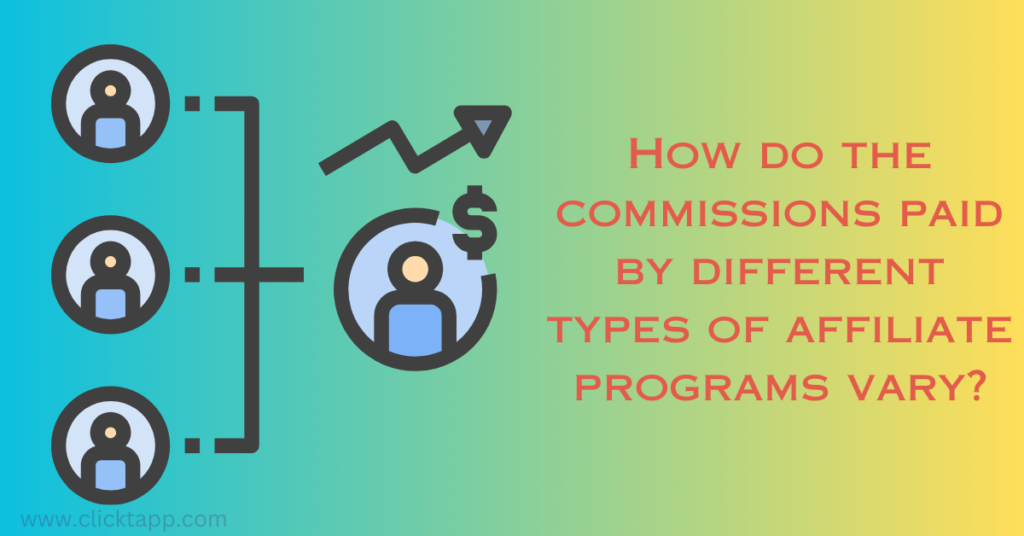Affiliate Marketing Campaigns: The tutorial will be step-by-step
Affiliate marketing is a way to earn passive income online. You promote other people’s products. You earn a commission for each sale from your referrals. A well-structured affiliate marketing campaign can be very rewarding. It may seem daunting at first. But, it is worth it. This tutorial will show you, step by step, how to create a successful affiliate marketing campaign. It will cover choosing a niche and optimizing your strategies for maximum profit.
1. Understanding Affiliate Marketing

First, we need to grasp affiliate marketing. It has three parties: the seller, you, and the customer. You promote the seller’s products with special links. If a customer buys through your link, you earn a commission.
Benefits of Affiliate Marketing
- Low startup costs: You don’t need to make a product or keep inventory.
- Flexibility: Work from anywhere. Pick the products you want to promote.
- Passive income: Earn money even if you’re not actively working.
2. Choosing Your Niche
Pick a niche you love and know well. This boosts your content quality and audience loyalty. Also, consider its demand and profit. The fitness sector is thriving. It offers good money with the right products. So, research deeply to avoid stagnation and money problems.

How to Choose a Profitable Niche
- Passion and Knowledge: Pick a niche you love and know well. This aids in crafting genuine content.
- Market Demand: Use tools like Google Trends and Keyword Planner to assess the demand for your niche.
- Competition: Check the competition. A tough niche might be hard for beginners, but it shows potential for profit.
- Monetization Potential: Make sure there are high-paying affiliate programs in your niche.
3. Finding Affiliate Programs
First, find a profitable niche. It should spark your passion and have a big audience. This could be anything from outdoor gear to eco-friendly products or pet care. Once you’ve found your niche, look for affiliate programs in that area. You have two primary options: individual merchant programs or affiliate networks. Individual merchant programs connect you to a specific brand. They allow for more personalized partnerships. But, affiliate networks like ShareASale or Commission Junction serve as a hub. They offer access to a vast pool of products from various merchants. Consider the pros and cons of each option. Look at commission rates, cookie durations, and tracking. This will help you choose the best fit for your online venture.
Types of Affiliate Programs

- Individual Merchant Programs: These are partnerships with companies that offer affiliate programs. Examples are Amazon Associates, eBay Partner Network, and Shopify Affiliate Program.
- Affiliate Networks: These platforms link affiliates to many merchants. Examples are ClickBank, ShareASale, and Commission Junction (CJ).
Evaluating Affiliate Programs
- Commission Rates: Higher commissions can significantly increase your earnings.
- Cookie Duration: Longer cookie durations give you a better chance of earning a commission.
- Reputation: Choose programs with good reputations to ensure timely payments and quality support.
- Product Relevance: The products should be relevant to your niche and audience.
4. Building Your Platform
You will use your platform to promote affiliate products. This could be a blog, YouTube channel, social media profile, or email list. Each one has its own benefits. So, choose the one that best matches your skills and audience.
Creating a Blog

- Domain and Hosting: Choose a memorable domain name and reliable hosting service.
- Content Management System (CMS): WordPress is popular. It’s flexible and easy to use.
- Design and Layout: Aim for a clean, professional look. Also, ensure your site works well on mobile and is easy to navigate.
- Content Strategy: Plan a content strategy. It should include blogs, product reviews, and tutorials. They must be both engaging and informative.
Leveraging Social Media
- Profile Setup: Create professional profiles on platforms like Instagram, Facebook, Twitter, and LinkedIn.
- Content Creation: Share valuable content regularly, including posts, stories, videos, and live sessions.
- Engagement: Interact with your audience through comments, messages, and polls to build a loyal community.
5. Creating Quality Content
Quality content is the cornerstone of a successful affiliate marketing campaign. Your content should provide value to your audience and encourage them to take action.

Types of Content
- Product Reviews: Write detailed and honest reviews of the products you are promoting.
- How-To Guides: Create step-by-step guides that show how to use the products.
- Comparison Posts: Compare different products within your niche to help your audience make informed decisions.
- Listicles: Curate lists of top products in your niche.
- Videos: Use YouTube or other video platforms to create engaging product reviews, unboxings, and tutorials.
Content Creation Tips
- Be Authentic: Build trust by being honest and transparent with your audience.
- Use Visuals: High-quality images, infographics, and videos can make your content more engaging.
- SEO Optimization: Use relevant keywords, meta descriptions, and internal linking to improve your search engine rankings.
- Call to Action (CTA): Encourage your readers to click on your affiliate links with clear and compelling CTAs.
6. Driving Traffic to Your Platform
Once your content is up, the next step is to get people to visit. More visitors mean more chances for sales and commissions.

SEO (Search Engine Optimization)
- Keyword Research: Use tools like Ahrefs, SEMrush, or Google Keyword Planner to find relevant keywords.
- On-Page SEO: Optimize your content with proper headings, keyword usage, and meta tags.
- Off-Page SEO: Build backlinks from reputable websites to improve your site’s authority.
Social Media Marketing
- Regular Posting: Maintain a consistent posting schedule.
- Engage with Followers: Respond to comments and messages to build a loyal following.
- Paid Advertising: Use targeted ads on platforms like Facebook and Instagram to reach a wider audience.
Email Marketing
- Build an Email List: Use lead magnets like free eBooks or newsletters to collect email addresses.
- Create Engaging Emails: Send regular newsletters with valuable content and product recommendations.
- Segment Your Audience: Tailor your emails based on your subscribers’ interests and behavior.
Paid Advertising
- PPC Campaigns: Use pay-per-click (PPC) advertising on Google Ads or Bing Ads to drive targeted traffic.
- Social Media Ads: Run ads on social media platforms to reach a specific demographic.
- Retargeting: Use retargeting ads to re-engage visitors who saw your content.
7. Tracking and Analyzing Performance

It’s important to track your performance to see what works. Use analytics tools for your affiliate marketing campaigns. This way, you can make decisions based on data.
Tools for Tracking
- Google Analytics: Track your website traffic, user behavior, and conversion rates.
- Affiliate Network Reports: Use the reporting tools provided by your affiliate networks to monitor clicks, sales, and commissions.
- Heatmaps: Tools like Hotjar or Crazy Egg can help you understand how visitors interact with your site.
Key Metrics to Monitor
- Traffic Sources: Understand where your traffic is coming from (organic, social, email, paid).
- Click-Through Rate (CTR): Measure the percentage of visitors who click on your affiliate links.
- Conversion Rate: Track the percentage of visitors who make a purchase through your affiliate links.
- Revenue: Monitor your earnings to assess the profitability of your campaigns.
8. Optimizing and Scaling Your Campaigns
Optimization is a process that never ends. It means improving your strategies by tweaking them based on performance data.
A/B Testing
- Headlines and CTAs: Test different headlines and CTAs to see which ones perform better.
- Content Layout: Experiment with different content layouts and formats.
- Traffic Sources: Test various traffic sources to find the most effective ones.
Scaling Strategies
- Increase Content Production: Publish more high-quality content to attract a larger audience.
- Expand to New Platforms: Reach new audiences by expanding to additional social media platforms or starting a podcast.
- Collaborate with Influencers: Partner with influencers in your niche to leverage their audience.
Conclusion
First, create a solid plan for affiliate marketing. Then, work steadily and refine your approach.
To build a profitable affiliate marketing business, do these things:
- Choose the right niche.
- Find suitable affiliate programs.
- Build a robust platform.
- Create valuable content.
- Drive traffic.
- Analyze and optimize your strategies.
Affiliate marketing success takes time. So, be patient, keep at it, and always offer value.
FAQs
1. What is the best platform for affiliate marketing?
There’s no one best platform. The ideal choice depends on your niche and audience. Popular options are blogs, YouTube channels, and social media.
2. How much money can I make with affiliate marketing?
Earnings depend on your niche, traffic, and marketing. Some affiliates make a few hundred dollars a month. Others can earn six figures.
3. Do I need a website for affiliate marketing?
A website is useful, but you don’t need one. You can promote affiliate products on social media, via email, or on YouTube.
4. How long does it take to see results from affiliate marketing?
It could take months to see big results. Success depends on your niche, content, and marketing.
5. Are there any costs associated with affiliate marketing?
Starting a blog may require spending on the domain, hosting, marketing tools, and ads. Yet, these costs are usually less than those for other online businesses.


Pingback: Marketing and Advertising Strategies: A Comprehensive Guide - Clicktapp
Pingback: Affiliate Marketing for Beginners: Your Ultimate Guide - Clicktapp